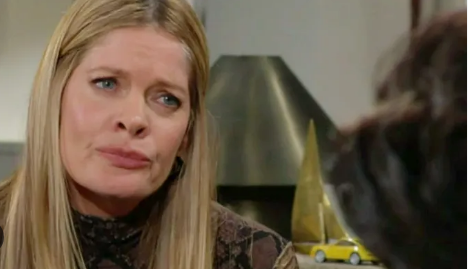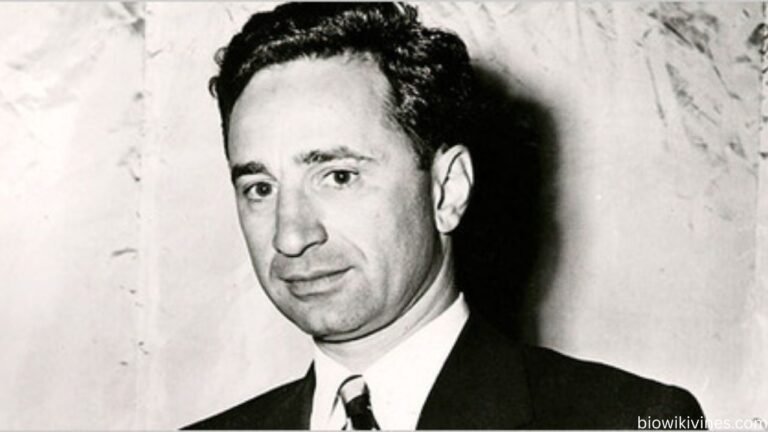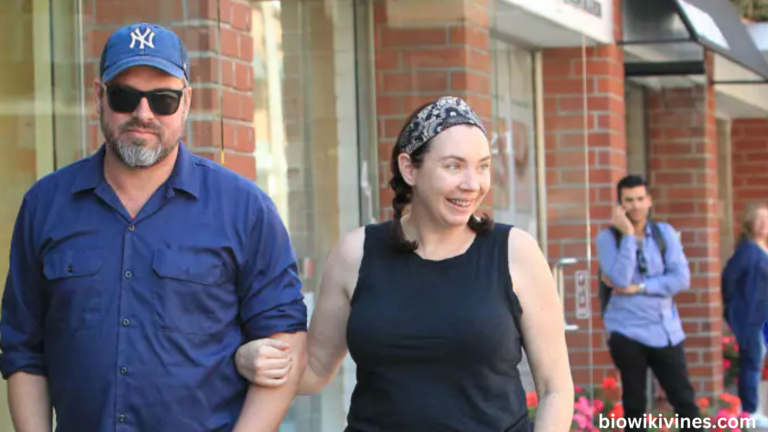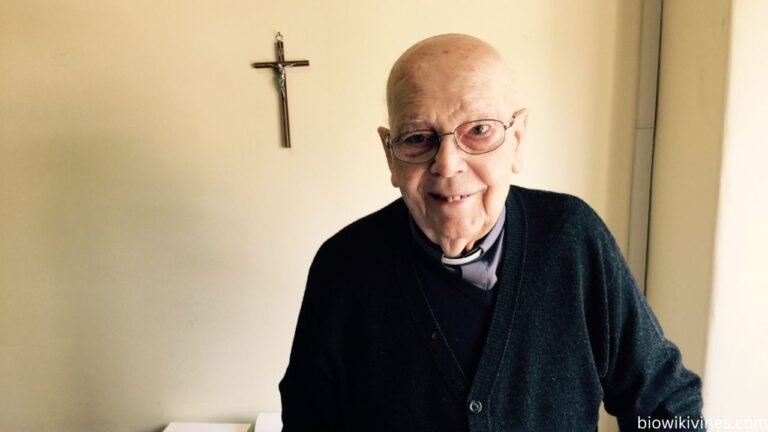Phyllis Holden Age, Net Worth, Family, Career ,height and weight 2025
When we hear the name Phyllis Holden we do not at once hear what happened to her–but it is a tale worth the telling. Her life was that of being caring, artistic and in the background with a lot of quiet power. Her experience as an occupational therapist, marriage to Bob Dole and her artistic life all make her journey easy to relate to in terms of care, creativity and resilience. This article we shall proceed to discuss the background and functions of Phyllis Holden, her contributions and her legacy in greater detail because you will understand why she is not just a footnote in history.
Who was Phyllis Holden?
Early life and education Phyllis Holden (since changed to Phyllis Holden Macey) was born on 10th January, 1925 in Rochester, New Hampshire. She pursued a degree in occupational therapy at the University of New Hampshire equipping herself with the skills to be able to assist people to overcome physical and mental difficulties.
Phyllis Holden biography
| Category | Details |
|---|---|
| Full Name | Phyllis Holden (later Phyllis Holden Macey) |
| Date of Birth | January 10, 1925 |
| Place of Birth | Rochester, New Hampshire, USA |
| Education | Degree in Occupational Therapy, University of New Hampshire |
| Profession | Occupational Therapist, Physical Therapy Consultant, Artist, Antique Dealer |
| Notable Workplaces | Percy Jones Army Medical Center (Battle Creek, Michigan) |
| Spouse | Bob Dole (married 1948 – divorced 1972) |
| Children | One daughter – Robin Dole |
| Major Contributions | Rehabilitation of war veterans, support to Bob Dole’s early political career, artistic and civic involvement |
| Artistic Interests | Folk art, paintings, antiques, handcrafted items (e.g., cross-stitched sweatshirts) |
| Notable Artwork | Poodle Skirt (1962) – in Spencer Museum of Art collection |
| Civic Involvement | Served on local Kansas boards; active in community events like Kansas Day celebrations |
| Residence After Divorce | Lived in Kansas (Sylvan Grove, Russell) and later Warner, New Hampshire |
| Date of Death | April 22, 2008 |
| Legacy | Remembered for her quiet strength, service to veterans, artistic creativity, and civic engagement |
Profession therapist and consultant
Phylis was occupied as an occupational therapist before joining the political life. Among her early jobs was one in a psychiatric ward of what came to be the Percy Jones Army Medical Center in Battle Creek, Michigan. That role she performed, caring to wounded service men – a difficult and at times significant task. She also shifted to physical therapy consultancy with time. Her years as a physical therapy consultant in Kansas came after her years of publicity.
Marriage and public life
In 1948 Phyllis was married to Bob Dole who was a young Army lieutenant, who returned home after war injuries. Their union lasted until 1972. Phyllis backed him in his entry into the public life (first in Kansas, then in Washington, DC) when she was his wife. They had a daughter, Robin.
Later years and art life
Phyllis did not give up on her work and personal activities after parting ways with Dole by divorce. She produced art and folk-craft, had opened an antiques shop in Kansas and pursued her creative interests and then passed away at Warner, New Hampshire on April 22 2008. The numerous characters of Phyllis Holden.
Care provider and occupational therapist
Her initial significant social job was an occupational therapist. With the post-war period in particular, those who had come back to life after the war were in need of rehabilitation. Phyllis used her education to help such people. Her competencies were to provide assistance to the daily living skills, mobility, and mental health of the patients. This characterization of the role of the therapists represents the general work of the therapists in America in the mid 20th century.
Political wife, behind the scenes player
Formal yet informal roles were also undertaken by Phyllis Holden, who happened to be the wife of an up-and-coming politician. Making the campaigns, organizing events, maintaining the family and the demands of the population, these activities are rarely discussed but define the work of the people in power. As one instance, in an article, she is quoted saying that she assisted Bob Dole through her taking of his class notes to him in his time in law school since he had been war wounded and could not take notes.
Artist and proprietor of an antique shop
Phyllis directed her later life more towards her creative side. She created paintings, folk art and handcrafted products (e.g. cross-stitched sweatshirts) and adopted antiques. One of the works in the collection of Spencer Museum of Art is her museum listed poodle skirt, 1962.
The community and civic participation
In addition to her work and creativity as a professional, Phyllis also worked in community roles. She participated in local boards in Kansas (such as the Kansas Judiciary Board) and Kansas Day yearly. This civil existence shows how citizens play their role behind the scenes.
Timeline of major events
The following table is a summary of some of the important moments in the life and career of Phyllis Holden:
- 1925 Born January 10 in Rochester, New Hampshire Origins and early life.
- ~1948 Meet Bob Dole at Percy Jones Army Medical Center Beginning of major personal collaboration.
- 1948 Married Bob Dole Enterprise into decades of being a spouse.
- 1960 Transfer of Dole to U.S. House when Dole elected to House of Representatives Context of transfer of Dole to national politics.
- 1972 Divorce Bob Dole on 11 Jan Divorce, new life.
- After 1972 Professional and creative life as an independent worker in a new direction, as a physical therapist and as a person owning antiques.
- Died April 22, 2008 in Warner, New Hampshire End of life, known in various capacities.
Role Description Impact
Occupational therapist Practiced in psychiatric ward and rehabilitation facilities Helped injured veterans and patients.
Political spouse Helped Bob Dole in his early career and campaigns activities Helped in providing personal stability to the public life.
Artist / antique dealer Created folk art, paintings and operated antiques store Exercised personal creativity and commercial interest.
Participant Community Strengthening local civic life, Served boards, local civic activities.
So what is special about Phyllis Holden?
Silent encouragement
One of her most important features is that she frequently labored behind the scenes: in therapy rooms, not in headlines; in campaign support, not as the leader of the campaign; in works of art, not in gallery openings. That is the kind of support that is needed yet hardly glorified. It depicts the value of non-public personalities and how they play a significant role in the lives of people.
Health, art and public service bridge
Phyllis crossed three worlds: health (therapeutic work), creativity (art and antiques) and service (her civic activities and work as political spouse). This mixture endows her narrative with richness perhaps more than it could have been, and brings to mind that the lives of people are not always limited to one area or one identity.
Separate identity
Although she came into the national public life through the marriage to Bob Dole, she had other identities and contributions that include her work in the therapy area, her art and her business activities. The fact that she has an independent identity is important in interpreting her heritage.
Lifelong adaptability
Phyllis changed her life several times: first she was a therapist, second as a spouse of a national figure, third as a creative entrepreneur and fourthly as a consultant. It was not true, she was not standing in the same position; she shifted roles and kept some of the fundamental principles of care, creativity and engagement.
Works and influence of Phyllis Holden
Through the patients, who have returned home after war injuries, and in the process of helping a war-wounded spouse herself, Phyllis has made us aware of the necessity of rehabilitation, occupational therapy and care in the veterans. Her example offers a human face to that which would otherwise be abstract.
Artistic work and eminence
The fact that her creative work has been included in museum collections (such as the Spencer Museum of Art) serves to recognize her creative work and ensure its continued existence in the future.
A model of collaborating and changing
Her marriage and its eventual breaking up her lesson is the changes that many individuals undergo when the world ceases to be private in terms of life, career, family and self development. That she resorted to other significant activity after years of public-life provides an example of renewal.
Local and community service
Her involvement in civic activities in Kansas teaches us that service is not only on the national level but also the local one. Workers who interact with their communities enhance the social continuum outside the limelight.
Reflections on scholars and researchers
- In case you are researching Phyllis Holden, the following are some of the things to consider:
- Primary sources: visual context is offered with the help of primary sources, such as archival photographs (e.g., in the Dole Archive Collections).
- Articles about biographies: obituaries (such as in The Washington Post) give biographies.
- Artistic documents: museum publications indicate her works and her creative heritage.
- Historical background: the path of female career, political-spouse, and rehabilitation employment in mid-20 th century America.
- In the life of Phyllis Holden, there are several important lessons.
- One can hold many significant roles in a lifetime, including professional, relationship, creativity, civic.
- The contribution of quiet support and behind the scenes is worthwhile even though it is not featured in mainstream media.
- This is how one can enter a new life stage (e.g., become a self-sufficient professional after being a public spouse) and it can be a very enriching experience.
- Even when life brings one out into civic or public life, art and creativity could be significant.
- A local civic participation is a significant supplement to more generalized form of identity.
Conclusion
When we look back at the life of Phyllis Holden, we discover not only a marriage with a social person. We discover a woman who had prepared to serve people, who had entered into a social arena in marrying, but had brought her own talents and interests, who had entered into art and entrepreneurship, and who was involved in her own town in significant ways. Her account makes us remember that service and creativity do not necessarily work in opposition, and that the identity of a person is formed not by a single role, but by a variety of roles. You can read her work in therapy, or her advocacy of a public husband, or her artistic work or her civic work, and you see that you are dealing with a purposeful, resourceful, and silent leadership.
To all who might care about the American history of the middle of 20 th century, art, rehabilitation and life on the street, Phyllis Holden is a valuable case study, a case that can help people learn a lesson of not disregarding the history and background of the person or organization that people are used to seeing every day. I would like you to walk away, after this quick rundown, with a deeper understanding of her life and what contribution is worthwhile, that is all around us, but often goes unnoticed.
FAQs
1.What was the history of Phyllis Holden, in the field of occupational therapy?
Phyllis Holden also graduated with a degree in occupational therapy at the University of New Hampshire and served in a psychiatric ward of Percy Jones Army Medical Center where she was working with injured veterans.
2.What was the relationship between Phyllis Holden and Bob Dole?
She married Bob Dole between 1948 and 1972 and assisted him in his early career, even when he went to a law school after being injured in war.
3.What was the type of artistic work that Phyllis Holden created?
Phyllis was occupied with folk art, paintings, antiques and handcrafted (like cross-stitched sweatshirts). Her piece poodle skirt, 1962 is in possession of the Spencer Museum of Art.
S4.o whither did Phyllis Holden go, after parting with her husband?
She spent her life after divorce in Kansas (such as in Sylvan Grove and Russell), operated an antiques store, worked as a physical therapy consultant, and finally moved to New Hampshire.
5.What makes the life of Phyllis Holden interesting nowadays?
Her life is notable since it cuts across health care, art, social service and personal transition. It also gives an understanding of the contribution of the people in various spheres behind the scenes and the relationship of the professional, creative, and civic roles.







